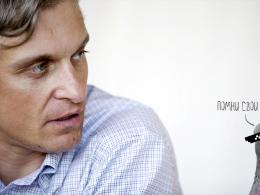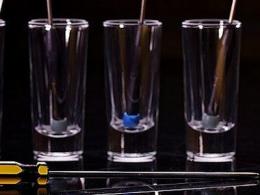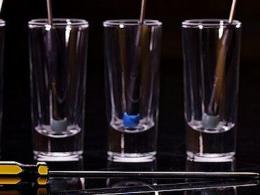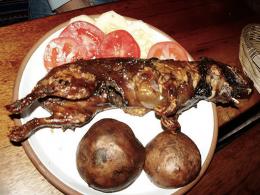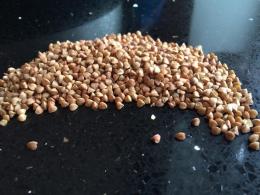If the child puts his foot inside. Read all!!! Recommendations of specialists of doctors - orthopedists! Treatment and prevention of X-shaped deformity of the legs in children
Any parents from the very birth of the baby are worried about the condition of his legs, will they be crooked, is everything in order with the feet, and will the baby walk well? If it seems to parents that not everything is in order with the baby’s feet, they begin to worry a lot, because the health of the entire skeleton, especially the spine, the beauty of posture and the ability to actively move, largely depend on the health of the foot. Often parents compare the gait and legs of babies with adults, and it seems to them that the child has problems with feet and gait, and sometimes, on the contrary, parents prefer not to notice that the child walks somehow incorrectly, attributing it to age characteristics and leg formation. How right, where is the line between the norm and pathology when assessing gait, setting the feet and resolving the issue of foot deformities? Today we will talk about such a problem as flat-valgus feet in babies.
What is flat-valgus feet?
A valgus deformity of the foot is called such a condition when the leg is, as it were, littered inward, and if the child’s knees are tightly compressed and straightened, a distance of more than four to five centimeters appears between the inner surfaces of the ankles. With this position of the legs, the toes and heel deviate towards the outer edge of the foot, and the inner arch of the foot, as it were, collapses inward. As a result of valgus deformity of the foot, the legs acquire an X-shape, the knees sharply converge with each other by the inner edges. If valgus deformities of the foot are also accompanied by a decrease in the height of the arch of the foot, then we are talking about flat-valgus deformity of the feet in babies. It is these anomalies in the development of the feet that are found in pediatric orthopedics and traumatology.
According to statistics, almost every second of children under five years of age who gets an appointment with an orthopedist and has deviations in the development of the feet is diagnosed with plano-valgus deformity of the foot. At the same time, violations are accompanied by the following manifestations - a flattening of the longitudinal arch of the baby's leg occurs, a valgus position is formed in the posterior section, while the forefoot assumes an abduction-pronation position. Simply put, the foot becomes flat, the foot falls inward, while the toes deviate to the side, which gives a specific look to the legs and gait of the baby. Most often, such an anomaly occurs in preschool or at primary school age, although sometimes the diagnosis is made illegally when there are no problems.
Why is the shape of the foot so important?
The special shape of the human foot was formed by centuries of evolution precisely in order to maintain it in an upright position, while distributing the load on the body, given that the weight of the human head is much larger in comparison with all other living beings. The bones of the foot are numerous, they are interconnected by interosseous and very strong ligaments, which forms a fairly elastic and mobile arch of the foot, the role of which is to maintain the maximum possible depreciation during movements - running, jumping, walking. The feet act as biological springs, preventing the body from shaking violently. The convex arch of the foot has an orientation in two directions at once - in the longitudinal and in the transverse. Due to this, the normal foot of an adult has three points of support on the foot - in the area of the head of the first metatarsal bone (under the thumb), in the heel area and in the area of \u200b\u200bthe fifth metatarsal bone (under the little finger).
In children, the arch of the foot at birth does not look like an adult, their feet are flat, without arches and bulges, and when the child takes his first steps, his feet are still quite flattened, so the child’s gait is uncertain and it is difficult to keep balance. During the first steps, a rather large load falls on the baby's feet, which later allows the child to learn to walk and form a normal arch of the foot. Parents should remember that there is no need to panic because the child’s gait in the first years of his life is not ideal - his foot is still growing and forming, and it is impossible to draw conclusions that “we have flat feet” or “we have clubfoot”. This is incorrect from the point of view of age anatomy. A confident gait and the correct arch of the foot will be formed in the child gradually, you do not need to immediately put an end to the child in terms of his further possibilities or run to the store for corrective shoes.
Usually, parents' complaints that something is wrong with the child's legs arise from the very first attempts of the child to walk. But at this age, it is necessary to clearly distinguish such a phenomenon as the physiological flattening of the arch zone of the foot, especially if it is a baby under three years old, the development of already flat-valgus beveling of the foot, which will require observation and correction by an orthopedic doctor. Until the age of about three years, there are special fat pads on the area of \u200b\u200bthe child’s feet, and therefore, if you look at the baby’s foot, its arches will not be very visible. The arch of the foot will be contoured if you ask the baby to stand on his toes. Bone tissues in the foot area will form in a child until about five or six years old, and therefore only at this age does it make sense to talk about whether or not a child has a deformity of the foot, especially its plano-valgus form.
However, it is worth noting that there are congenital anomalies of the feet with a strong plano-valgus deviation, and then the diagnosis of valgus feet is made from the maternity hospital, there is a vertical ram, an anomaly of intrauterine development of the foot. But these anomalies of the foot are visible to the naked eye and they are present immediately from the very beginning. Why are flat-valgus feet bad, except for a directly cosmetic defect? First of all, they lead to a negative effect on the spine and its curvature, constant pain in the legs and the formation of early osteochondrosis and arthrosis in the affected joints. This significantly limits the quality of life of such children and their choice of profession in the future.
The reasons for such an anomaly of the feet
The valgus form of foot deformity can be congenital or acquired in a child. In the congenital form, the leading factors are usually unfavorable factors that affect the development of the shape and position of the bones in the top, and then valgus-type foot deformities can be diagnosed either immediately at birth or in the very first months of the baby's life. The most severe and related to true congenital forms can be considered the foot "vertical ram" and "rocking foot". The acquisition of the form of a valgus foot in childhood is associated with the imperfection of the ligamentous and tendon apparatus, deviations in the formation of the baby's musculoskeletal system. Usually, these deviations begin to be detected in children not earlier than a year, when children make attempts to walk independently without support.
Valgus deformities of the feet are usually formed in debilitated children with diffuse muscular hypotension. The reasons for such hypotension can be the prematurity of the baby or the transferred intrauterine malnutrition, hypoxia, and it can also be the result of congenital weakness of the connective tissues, with frequent diseases at an early age, especially if they were SARS, pneumonia and bronchitis. A special role in the weakening of the musculoskeletal and ligamentous apparatus is assigned to such a disease of children as rickets. Also, a violation in the dynamic and static relations of muscles and ligaments occurs with such pathologies of neuromuscular transmission as polyneuropathy, cerebral palsy, poliomyelitis and myodystrophy. Hallux valgus in toddlers at an early age can be the result of overweight and obesity, which leads to pathological stress on the foot due to body weight.
In some cases, valgus deformities in the foot area in babies can be the result of injuries to the muscles, ligaments or bones in the lower leg and foot area, prolonged immobilization of the leg with a cast or bandage. Even less often, such valgus deformities occur in children with dysplasia and congenital dislocation of the hip. And yet - and all parents need to pay attention to this, the causes of valgus deformity of the feet in babies may be the early onset of walking, when parents put children on their legs at almost 5-6 months and lead them by the handles, imitating what the child supposedly wants walk! Too soft and poor-quality shoes for the first steps can also affect the formation of a valgus foot.
If the child’s muscle tone is weakened, and at the same time he is also put on legs and forced to walk, under the weight of his own weight, the arches of the foot flatten and weak ligaments are greatly stretched, the foot remembers such a pathological position, the ligaments of the tibial muscles are weakened, the ligaments in the area of the fingers are weakened on the foot. And after such forced loads, the foot can no longer be formed correctly. Think about this before you put the child on his feet and lead him by the handles and allegedly "walk". With hallux valgus, the foot in children shifts inward, towards the ankle joint, while the heel and fingers turn outward.
An unsuccessfully twisted leg can turn into seconds of pain, or maybe weeks of long recovery from torn ligaments. Medical editor of the Challenger Dima Solovyov explains what to do if he sprained his leg and what determines the severity of the consequences. Be careful!
This has probably happened to each of us: you are walking, it would seem, on a flat surface, without looking under your feet, and suddenly - on a bump that you did not notice, the foot turns to the side, it pierces with a sharp pain. This means that you twisted your leg. Today we will find out what happens in this case, whether such an injury is dangerous and what to do if it does happen.
What does it mean to "tuck your leg"
“Turn the foot” is not a medical term, as this combination of words means only a mechanical process of how you can turn the foot in an unusual and unsafe way for it. This usually occurs when touching a surface that a person is walking on, although in some sports (such as football) similar injuries can occur when touching a ball or any other object.
So the tucking of the leg itself is not dangerous, but the damage that the ankle joint and the tissues surrounding it can receive is dangerous. The ligamentous apparatus suffers most often, less often bones, muscles and nerves. Precisely from that what gets hurt and how strong depend on the consequences of the injury.
What can be damaged
All the consequences of an unsuccessfully turned up leg are assumed by the ankle joint. It is located near the ankle and connects the bones of the lower leg and foot. Alas, this is a rather fragile and generally “problematic” joint. In order for us to walk easily and freely, it must be sufficiently mobile and therefore consists of small bones, which together form a complex system. The situation is aggravated by the fact that the ankle joint accounts for the mass of almost the entire body, and during loads, such as running or even fast walking, the pressure on the joint only increases. So the consequences of twisting the leg are injuries in the ankle joint: sprains, tears and even torn ligaments, as well as dislocation of the leg and, in the worst case, bone fractures.
In most cases, the leg is twisted inward, resulting in damage to the ligaments on the opposite (outer) side of the leg. This can lead to their stretching, tearing or even rupture (sometimes a click or crunch is heard at the time of injury). As a rule, the stronger and sharper the leg is twisted, the more severe the consequences for the ligaments. If the ligaments cannot compensate for too sharp a turn in the joint, it can dislocate, and if a person has a tendency to brittle bones, then even a fracture of the bones located nearby can occur. In a word, the consequences can be very different: from mild to quite serious.

What to do if you sprained your leg
If you just twisted your leg, after ten seconds the pain goes away and you can move on - nothing needs to be done. However, if the pain still persists, you need to examine the leg in the area of the affected ankle joint.
First of all, we pay attention to the nature of the pain. “Suspicious” is considered to be, which remains strong for an hour, appears and intensifies when you try to step on an injured leg. Even touching the skin near the ankle can be painful. This may be accompanied by bruising and swelling of the tissues around. A more formidable symptom is a change in the shape of the joint and a violation of its mobility (especially the appearance of new, previously impossible movements - say, an unusual deviation to the side). In the most severe case, even the shape of adjacent bones can change - this already makes you think about a fracture.
If you twist your leg and it continues to hurt, there are four things you need to do:
- Let her rest. Try to walk less in the next couple of days, ideally, activity in the affected ankle joint should generally be minimized.
- Cool the joint area. Ice is best for this, but you can also use a towel soaked in cold water. During the first day, apply it on the ankle for 15-20 minutes every 3 hours. However, do not overdo it: if the skin is very pale, immediately remove the ice from the leg and warm it up.
- Put something tight on your leg. It can be tight stockings, compression stockings or a tight bandage - the goal is to prevent excessive swelling around the ankle joint from developing. The compression should be tight, but not too squeezing, otherwise there will be a threat of impaired blood flow.
- Raise the affected foot up, this will also help to avoid swelling. We are not talking about the fact that you need to lift it high: a pillow placed under the leg is enough.
If the pain seems too strong for you, then in the absence of contraindications, you can take painkillers from the group of non-steroidal drugs: paracetamol, ibuprofen, etc. There are also local ointments and gels with a similar effect.

Photo: Morian Marroni / freeimages.com
There are also a few things NOT to do:
- Warm baths in the early days are contraindicated. Warm water activates the blood supply to the damaged area, which threatens to increase swelling and inflammation.
- You should not continue to walk a lot and play sports, overcoming the pain. So you can additionally damage an already diseased joint, which threatens to aggravate existing injuries.
- Massage in the area of injury at first, too, may not be very helpful. The reasons are the same - massage improves the blood supply to the tissues, and this is not at all what we need: it will increase inflammation, swelling and may even cause bruising.
- There is one more thing to avoid: staying too long. Rest in the first day or two is necessary, but in the subsequent gradual increase in activity in the ankle only contributes to healing. The only exceptions are the most severe injuries, when pain simply does not allow walking, but in such cases it is also impossible to lie at home - you should consult a doctor.

When to Seek Medical Care
The most common ankle injury, a sprain, usually resolves on its own and without sequelae. However, in some cases, the injury can be much more serious, and one cannot do without going to the doctors. Here are some signs of such an injury:
- if, after damage to the joint, unusual movements became possible, its stability was disturbed;
- if there is a visible deformation of the bones;
- if on the second day when you touch the skin over the damaged joint, severe pain persists;
- if after 4 days the affected leg is still difficult to step on;
- if you experience very severe pain, swelling or bleeding;
- if you find that all or part of your foot is numb (a sign of nerve damage).
In all these cases, you should contact a traumatologist. He should ask you about the circumstances of the injury and will most likely take an x-ray. As a rule, these data are enough to make a diagnosis, but sometimes additional studies may be required: ultrasound of the joint, CT or MRI.
If you don't have any of the symptoms listed above, it makes sense to wait and see how your ankle will behave. There is evidence that in case of damage to the ligaments, the examination after 5 days is less than the examination during the first 2 days. So if there are no pronounced symptoms, in the first days you can wait for the pain to disappear.
Foot deformity in children is a pathology in which body weight is unevenly distributed. The back, knees, joints help the limbs to maintain balance, balance, taking the load on themselves. Parts of the musculoskeletal system wear out, weaken, indicators of the angle of the arch increase.
Changes in muscle connections are the underlying cause of the defect. Changes are provoked by congenital or acquired factors.
Features are typical for a child whose age allows him to move independently for a long time. A newborn or baby does not stand up, the musculoskeletal system is at the initial stage of strengthening, it is difficult to determine the presence or absence of pathology.
As soon as the baby grows up, the parents wait for his first steps, hurrying him up, putting him in a walker. The baby does not have the opportunity to report that the legs are tired or hurt. Crying is perceived as a childish whim. Moms independently provoke the development of valgus or varus form of the feet.

Types of deformation
limb curvature- change of form. Changes are reflected in the gait, the appearance of painful sensations. The transformation of the leg is noticeable externally, the deformation varies from similar to radically opposite (valgus and varus variety; flat feet and hollow foot).
Flat feet and hollow feet- the second pair of opposites: with flat feet, a flat limb is formed; hollow - characterized by a high rise.
Clubfoot- a rare congenital pathology or an acquired problem against the background of injuries, burns of the limb.
The type of deformation has little effect on the choice of method for its correction. The key sign is the degree of the disease, the stage of neglect.

Methods for correcting deformities in children
Pathology in children is eliminated after finding the problem. The initial symptoms of deviation are diagnosed by parents at home, paying attention to factors:
- staging when walking with a deviation to the outside or inside;
- shuffling gait;
- passivity of the child, rapid fatigue.
After observing persistent or intermittent symptoms, go to the orthopedist. The medical setting of the problem is the next step. The orthopedist measures the height, rise, angle, determines the type of diagnosis. The more difficult the collapse, the more methods are used. In a medical institution do:
- x-ray of the foot;
- goniometry (range of motion);
- plantography (degree).
If plantography showed a deviation of the early stage (the angle is not more than 15-20°), conservative methods of treatment are relevant, aimed not at the point elimination of the problem, but at prevention. A foot with an angle of deviation of more than 20° requires therapeutic, physiotherapeutic treatment. Surgery is necessary when the angle exceeds 30°.
The main goal of conservative and surgical therapy is to strengthen the ligaments and muscles to restore the correct shape of the foot.
Conservative treatment
Treatment of acquired or congenital undeveloped deformity of a younger age is a matter of adjustment. Conservative correction consists of therapeutic practice and methods without medical support.
Among the therapeutic methods:
- Electrophoresis - the introduction of drugs by electric current through the skin, mucous membranes.
- Electrical stimulation - restoration of stop function by pulsed current.
Osteopathic methods, home therapy are relevant in childhood, when preventive measures are the basis of treatment.
| Varieties | Impact on other organs | |
| Effect | Periodicity | |
| Massage |
|
|
| Improvement of blood circulation | Fifteen sessions with a break of two weeks | |
| Trays | Salt; coniferous; chamomile | Knees, ankles |
| Stimulation of blood circulation | From 3 times a week | |
| Redressation | closed exposure |
|
| Violent Correction | Correct every two weeks until the defect is fixed | |
| Paraffin therapy | Thermal compress; paraffin boots | Skeletal muscles |
| Relaxation of the muscular organs | Before getting a result |
Sports activities are involved in the formation of the arch - the muscle of the limb, ligaments are toned.
An orthopedic pair of shoes or an insole with an arch support will complement the course of treatment, but are not considered as a separate effective method. A properly selected model creates the effect of plaster, firmly fixing the position of the limb. Shoes (insole) are changed as soon as the foot increases.
The medical complex works together, it is important to use, step by step, varieties of osteopathic, home therapy, sports, and, if necessary, medical procedures.
When is surgery required?
Any type of foot deformity in children under 12-15 years of age is corrected, more often the surgical effect is considered for congenital pathologies. The acquired form of the severe stage (requiring surgery) rarely occurs at an early age, as it is formed after a long walking time.
The simplest operation to correct the foot is the application of a cast. An arch support is an analogue in the classical, preventive therapy of the early stages of deformity. Gypsum fixes the limbs in the correct position, but hinders movement, inhibits development. The installation is replaced by temporary immobilization of the legs: at night - bandages; in the daytime - another product prescribed by an orthopedist (orthosis).
If the application of gypsum is an ineffective load, they resort to a complex operation. Deformity correction consists of diagnostics, preparatory stage, surgery, recovery period.
- Diagnosis indicates the features of the angle between the first and second metatarsal bones (first, second finger). The operation is allowed when the interosseous spaces are slightly enlarged.
- The preparatory stage consists of at least three days. Stationary period of cooling, anesthesia of injured limbs.
- The surgeon removes parts of the bone that interfere with the correct placement of the foot when walking or performs an operation on the soft tissues of the foot (maybe a combined operation).
- Recovery period - conservative therapy procedures, Filatov stem (material that tightly covers the limb, protecting against infections).
The operation gives a good cosmetic effect, restores the functionality of the limbs. It is often the only method for correcting congenital pathologies.
Prevention of curvature of the foot in children
Preventive measures are aimed at initially correct formation of the foot. Dr. Komarovsky recommends moving barefoot on uneven surfaces or on flat surfaces in shoes with an instep so that there is no possibility to fill up the leg. The main rule of prevention is the avoidance of even edges on which the child steps to prevent the development of flat feet. If the baby has a noticeable manifestation of the X-shaped or O-shaped legs, walking becomes shuffling, they buy an anti-valgus or anti-varus pair of shoes so as not to further bend the leg.
Among other methods, any methods of conservative therapy are suitable. Prophylaxis that prevents curvature is useful in the postoperative period.
In childhood, the congenital and acquired cause is corrected. A crooked foot in a child is not a sentence. The main thing is to identify the problem in time, contact an orthopedist to diagnose the type of curvature. Recovery will begin without surgical intervention, if preventive measures are taken comprehensively and daily.
- a defect characterized by a decrease in the height of the arches of the foot and an X-shaped curvature of its axis. With hallux valgus, there is an outward turn of the toes and heels, drooping of the midfoot, clumsiness of the gait, increased fatigue, and pain in the legs. Valgus deformity is diagnosed by a pediatric orthopedist on the basis of an external examination, radiography of the feet in 3 projections, plantography, podometry. Treatment is carried out with the help of exercise therapy, massage, wearing orthopedic shoes, applying orthopedic splints; in case of ineffectiveness, surgical intervention is performed.

General information
To exclude the pathology of the central and peripheral nervous system, children should be examined by a pediatric neurologist.
Treatment
The goal of the treatment of hallux valgus in children is to restore its normal shape and function, to strengthen the muscular and ligamentous apparatus.
With congenital hallux valgus, immobilization of the limbs with plaster casts may be necessary. The selection and modeling of the dressing is carried out by a pediatric orthopedist, taking into account the type of deformation and the degree of deviation from the norm.
At the next stage (and in the case of acquired hallux valgus - from the very beginning), foot baths, massage courses (lumbosacral region, leg joints, feet), paraffin therapy, ozocerite and mud applications, electrophoresis, diadynamic therapy, magnetotherapy, electrical muscle stimulation are recommended shins and feet, IRT. Useful classes in therapeutic swimming and exercise therapy.
Children with hallux valgus need the selection of individual functional insoles or special orthopedic shoes with rigid lateral fixation of the foot and heel, arch support.
Surgical treatment is used relatively rarely (in about 7% of cases). The method of correcting valgus deformity of the feet is determined individually, taking into account the characteristics and severity of the pathology. The most widely used methods in pediatric traumatology of orthopedics are transplantation of the tendon of the peroneus longus muscle on the inner edge of the foot with lengthening of the Achilles tendon; arthrodesis of the talonavicular joint, application of an external fixation device, etc.
Forecast
Valgus deformity of the foot in children can reach severe degrees, being not only a pronounced cosmetic defect, but also causing functional disorders of the limb, up to disability at a young working age. In the case of a low degree of deformity and timely treatment, it is possible to fully restore the function of the foot.
Prevention
In order to avoid the development of hallux valgus in children, the load on the lower limbs of the child up to 7-8 months should be excluded. It is necessary to adhere to a rational regimen, including hardening, gymnastics, preventive massage, good nutrition, sufficient sleep and walks. Important is the prevention of rickets, the intake of vitamin D and trace elements.
It is mandatory to regularly visit a pediatrician, as well as preventive examinations carried out by specialists in various fields (including a pediatric surgeon and an orthopedist). It is necessary to pay serious attention to the correct selection of shoes for a child: they must be in size (not small and not large); made from high quality natural materials; have a dense arch support, rigid back and side parts.
Often, one-year-old babies are diagnosed with valgus flat feet. Pathology can be avoided if you know what kind of ailment it is. E.O. Komarovsky talks a lot about hallux valgus in children. What a well-known pediatrician advises regarding the disease, the article will tell.
Valgus deformity of the foot, what is it?
The disease is associated with improper positioning of the foot when walking in a child. It is expressed in an X-shape, when the baby rests on the inside of the feet, which outwardly assume a cruciform position.
It is interesting!
Parents are able to independently diagnose hallux valgus in a child. To do this, the doctor advises to put the baby straight, press the straightened legs together at the knee. If valgus flatfoot is present in children, the distance between the ankle bones will exceed 3 cm.
With such a deformation, the height of the arch decreases and the axis of the foot is deformed. If you draw a line from the knee to the end of the heels, you can see how it curves in the area of \u200b\u200bthe inner bones at the ankle. If you do not take measures to treat the pathology, the legs will begin to take on the shape of X in the knee area.
There are two types of valgus flatfoot:
- congenital;
- Acquired.
In the first case, the feet are located at the wrong angle relative to the support from the birth of the child. Doctors can eliminate the problem in 80% of cases only by surgery. The acquired form is easier to adjust. If you start treatment in a timely manner, the pathology disappears with the development of the baby and does not bother him, subject to the rules of prevention.
Pediatrician E. O. Komarovsky also speaks about other information about the feet of babies:
- Valgus is a pathology that manifests itself in the form of an incorrect location of the big toe in a child, which curves towards the other fingers. The disease is more familiar to adults due to wearing the wrong shoes. In children, the disease occurs less often. It is associated with the development of flat feet, excessive load on the child's legs, early learning to walk;
- Varus deformity - the opposite of valgus, when the child's feet take an irregular O-shape, the legs are placed when walking on the outside of the foot. It occurs as a result of bone pathologies, wearing uncomfortable shoes, rickets.
Foot valgus in children Komarovsky, like other diseases associated with foot deformity, refers to a problem that can be corrected. It is important to start treatment on time.
Valgus foot in a child according to Komarovsky goes through four stages:
- The first is manifested in the deformity of the foot, deviating from the norm at an angle of 15 degrees or less. The disease can be cured with the help of conservative methods;
- The second assumes a curvature at an angle of 15 to 20 degrees. The therapy includes additional measures: massage, special exercises, children's gymnastics, physiotherapy;
- The third degree is manifested in the deviation of the angle from the norm up to 30 degrees. The knees may be affected. It is much more difficult to treat the disease, but if all the doctor's recommendations are followed, a positive result occurs in 90% of cases;
- The fourth degree of development - the angle of deviation exceeds 30 degrees. Conservative treatment is long and includes a diverse set of measures. When therapy fails, surgery is indicated.
Therefore, a scheduled examination by an orthopedist is so important to identify the first manifestations of valgus flatfoot in children.
Causes of the disease, symptoms
It is important to know why a flat-valgus foot occurs in a child, Komarovsky talks about the most common causes. They are associated with pathologies of the musculoskeletal system, the transfer of severe viral infections in the first year of life. Rickets, obesity, prematurity, early staging, neuromuscular diseases, heredity, and immobility of the baby can also lead to the development of foot deformity.
Attention!
Komarovsky advises not to put the child on legs before 7-8 months. Early standing is the cause of the development of foot deformity.
It is easy to recognize flat-valgus deformity of the foot even at home. According to the doctor, you should pay attention to the following manifestations:
- While walking, the child puts the foot incorrectly, leaning on its inner part;
- The legs take an X-shape;
- The child may complain of fatigue in the legs, pain;
- The sole is more trampled on the inner edge;
- Clumsy gait;
- The footprint on paper will be clearer on the inside of the foot;
- It is difficult for a child to walk in shoes.
If you find the first signs of pathology, you should contact an orthopedist. He can make an accurate diagnosis.
Treatment
Therapy depends on the degree of damage and deformity of the foot. At the first and second stages, valgus feet in children according to Komarovsky lend themselves well to correction by conservative methods. Therefore, it is not necessary to bring to surgery.
Komarovsky proposes the following set of measures:
- Vitamin. Often the cause of the development of deformation is a lack of vitamin D. It is recommended to include vitamin D in the diet of a child up to 3 years of age;
- Massage. It is aimed at weakening the muscles of the outer surface and toning the inner ones. The procedure must be carried out by a specialist. On average, the course is 10 procedures, which should be repeated every 3-4 months;
- Shoe selection. If the child is small and the deformity of the foot has not passed into the 2nd degree, Komarovsky advises buying good sandals with a high back side, made of natural material, with an orthopedic bulge in the arch area and put on the baby daily for several hours. Correct shoes for flat feet according to Komarovsky:
- Standard rounded toes without narrowing in the toes;
- Flexible sole, soft enough;
- Stable and high back;
- Soft arch support, small in size;
- Shoes should fit perfectly in size, not bring discomfort;
- Adolescents may have a small heel (up to 4 cm);
- Convenience and comfort, natural materials.
This will help to correct the correct setting of the foot, keep the leg in the correct position when walking;
- It helps well with valgus flat feet walking barefoot on grass, sand, stones. This activates the work of all the muscles in the foot;
- Treatment of hallux valgus in children according to Komarovsky is not complete without performing special exercises:
- Rolls from heel to toe;
- Walking on toes, heels;
- Grabbing small objects with toes, moving them;
- Building a house of pencils with the help of toes, drawings in the sand;
- Alternate walking on the outer and inner side of the foot.
Komarovsky advises to pay attention to the activity of the child. If he spends a lot of time sitting at the computer or watching cartoons, you should switch his attention to active activities and walks in the fresh air. Such joint walks can be a great pastime for the whole family.

